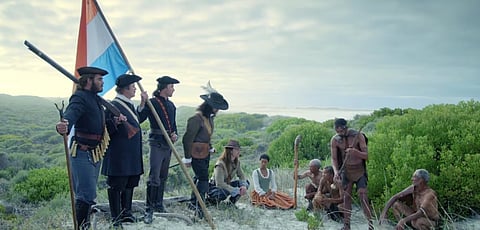

European colonisers altered the genetic ancestry of indigenous peoples in southern Africa, according to a new study.
The colonial-period arrival of Europeans in southern Africa is associated with strong sex-biased migration by which male settlers displaced indigenous Khoekhoe and San men, as per the study.
‘Khoe-San’ is a collective term for the indigenous peoples of southern Africa. Khoe-San communities harbour a high level of genetic diversity, representing the earliest population divergence among human populations. The diverse range of groups include both hunter-gatherers (San) and cattle/goat/sheep pastoralists (Khoekhoe) who share a common genetic ancestry.
The Khoe-San remained relatively isolated until approximately 2,000 years ago with the arrival eastern African pastoralists and Bantu-speaking agro-pastoralists. Bantu-speaking groups largely displaced or incorporated Khoe-San populations in the eastern half of South Africa over the past 1,500 years, but western Bantu speakers only more recently expanded into western portions of South Africa.
The study was published in the Cell Press journal on September 23, 2025.
To understand how European colonisers, indigenous peoples, and enslaved people contributed to the genomes of modern-day South Africans, the researchers analysed genomes from over 1,200 contemporary individuals from different regions in South Africa, spanning from southern Cape Town to Khoe-San indigenous communities living in northern and north-eastern South Africa.
Perhaps the best-studied population in this regard is the South African ‘Coloured’ (SAC) population. Today, approximately 47.5 per cent of the population in the Western Cape and 43.7 per cent of those in the Northern Cape Province of South Africa self-identifies as ‘Coloured.’ These communities are referred to as ‘Coloured’ based on an artifact of colonial and Apartheid-era South African terminology. Together, the South African Coloured (SAC) population numbers over eight million individuals in South Africa today.
In this study, genetic data shows the direct impact of European colonialism on the population structure in southern Africa.
The study results show that European ancestors were more likely to be male, whereas indigenous Khoe-San ancestors were more likely to be female.
The mechanisms behind these colonial sex biases are multi-faceted and include inter-marriage as well as sexual violence.
Enslaved individuals, primarily women, were brought from South Asia, Southeast Asia, and Eastern Africa to the Cape by the Dutch East India Company (VOC). This female-biased importation is reflected in the genetic data, with higher female contributions from these regions.
In 1652, the Dutch East India Company (VOC) opened a small trading station in what is now Cape Town, and European colonisers continued to settle in the area for the next 250 years. Between 1652 and 1808, the VOC enslaved around 63,000 people from equatorial Africa, South and South-East Asia, and Madagascar and brought them to the region. The VOC also hired labourers from the local Indigenous Khoe-San communities.
The study concludes that the complex historical interactions during the colonial period, including the slave trade and European settlement—resulted in distinct sex-based genetic signatures that are detectable in the ancestry of present-day South Africans.